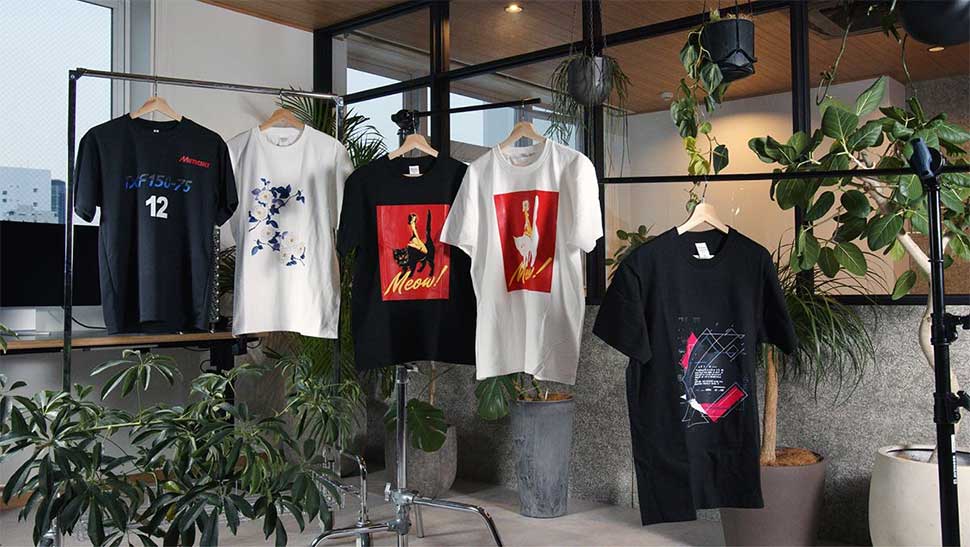Mimaki has announced its first ‘direct to film’ (DTF) inkjet printer, the TxF150-75, at its Global Innovation Days event.
Utilising a heat-based transfer method, the printer is ideal for creating premium, customised merchandising, sportswear and various other promotional textile applications.
DTF printing provides an easy and affordable process for decorating apparel, and is commonly used for decorating T-shirts. The design is printed directly onto a special transfer film, which is then sprinkled with hot-melt powder, and once heated and dried, the transfer sheet is ready to be applied to the fabric using a heat press.
Based on Mimaki’s best-selling 150 Series, the new TxF150-75 responds to the market need for a reliable, stable DTF technology. A built-in ink circulation system and degassed ink pack design help prevent common DTF issues, and by utilising proprietary Core Technologies, which include a nozzle check unit and nozzle recovery system, the printing process is carried out efficiently with minimal user intervention.

Mark Sollman, Sr. Product Manager EMEA, Mimaki Europe comments, “Apparel decoration is a hugely popular and dynamic sector, one which we are already operating in with our other textile technologies. However, we could see the impact DTF technology has had on the industry in recent years, with its significant advantages over existing technologies. Namely, DTF avoids the time intensive process of plate creation in screen printing and the required weeding in traditional vinyl heat transfer. The technology can also create vibrant designs with its full colour printing capabilities. We’re excited to bring a solution to the market that is designed for those already active in the decorated apparel sector and those looking to enter it, which excels in usability, reliability and quality.”
DTF printing is a printing method that has become widespread in the textile and apparel industry, especially in the wear printing market typified by T-shirts. In DTF printing, the design is first printed directly on a special transfer film by a printer. Next, the printed film is sprinkled with hot-melt powder, which is then heated and dried to form a transferable ink layer on the film. The formed ink layer is then transferred to a fabric such as a T-shirt by a heat press to complete the finished product.
As the company’s first entry into a new segment, Mimaki has created its own range of water-based pigment inks (PHT50) especially for this solution. As of March 2023, these inks are OEKO-TEX ECO PASSPORT certified, guaranteeing that safety and environmental standards are met in line with Mimaki’s sustainability pledges. Unlike sublimation heat transfer printing, DTF is much more versatile when it comes to materials, able to work with more than just polyester and polyester blended materials, and on light or dark coloured fabrics.
The TxF150-75, developed by Mimaki Engineering, is an inkjet printer with a maximum printing width of 80 cm for producing DTF print transfer sheets. The PHT50 heat transfer pigment ink for DTF, consisting of five colors (CMYK and white), is scheduled to obtain the ECO PASSPORT certification by the end of March which is essential for obtaining the international safety standard for textile products “OEKO-TEX”.
The DTF printers have been plagued by ink ejection defects and white ink clogging. To overcome these issues, Mimaki has adopted a degassing ink design that uses aluminum packs as the printer's ink packaging form, as well as a white ink circulation function MCT (Mimaki Circulation Technology)*1. The new printer also features Mimaki's NCU (Nozzle Check Unit)*2 and NRS (Nozzle Recovery System)*3 technologies that support stable operation. They ensure continuous printing without stopping the operation to support customers' productions.
Currently, silk screen printing is widely used in the wear printing market, but this printing method requires the preparation of plates, making it unsuitable for small-lot production. Moreover, full-color printing requires time and labor to create plates for each color. The heat transfer method using rubber sheets is also commonly used, but it involves manual labor for "weeding," which is the process of manually removing unnecessary portions of the transfer when fixing the printed design on the fabric. In recent years, there has also been a growth of direct-to-garment (DTG) printing, which uses inkjet printers to print designs directly on garments and fabrics. DTG printing does not require plates and can be used for full-color printing, but it does require fabric preprocessing and manual handling by the operator at each printing steps.
Under these market circumstances, DTF printing eliminates the need for plate preparation and weeding, which have been difficulties in conventional printing methods. Since it enables unattended printing process operation, it is rapidly being adopted in the market as a technology that contributes to labor savings.
The printer is supplied with Mimaki’s RasterLink7 RIP software, allowing users to have full oversight and the ability to streamline the process from the design to the final product. Distributed in the UK and Ireland by Hybrid Services, the TxF150-75 will be commercially available via its network of specialist resellers from April 2023.